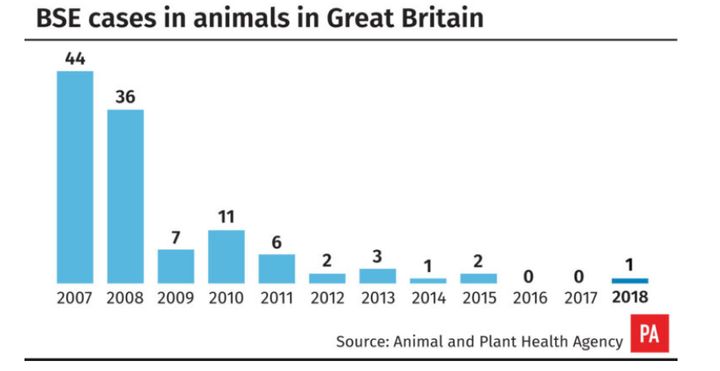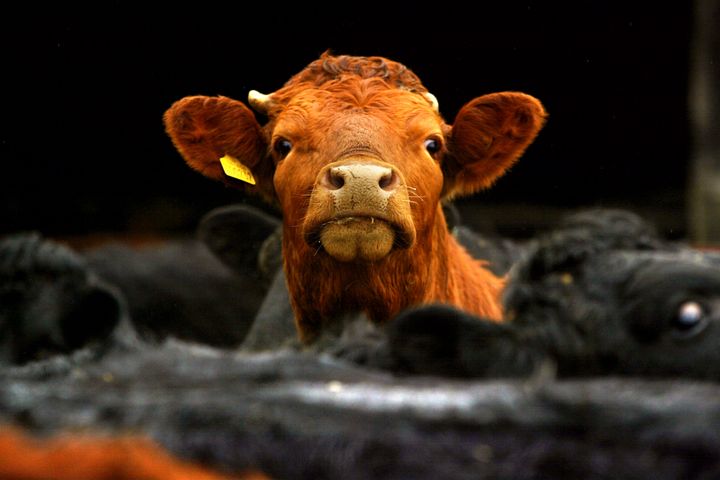In the mid 1990s, a disease took hold of the UK that changed the face of agriculture forever – and profoundly shifted the country’s relationship to meat.
It was known as mad cow disease, or Creutzfeldt-Jakob disease, and since an explosion of cases in 1996, almost 200 people have died from it.
The version for cattle, called bovine spongiform encephalopathy – BSE – has been responsible for the deaths of more than four million cows.
It has cost the NHS over a billion pounds and virtually destroyed the beef industry in the 1990s. The BSE crisis as a whole is estimated to have cost the UK an estimated £3.7bn.
On Thursday, BBC 2 will air Mad Cow Disease: The Great British Beef Scandal, laying bare a story of greed, corruption and catastrophic political misjudgement by the then-Conservative government.

Here’s everything you need to know about the disease.
What is BSE?
BSE, or Bovine Spongiform Encephalopathy, is a disease which infects cows, attacks their central nervous system and is generally fatal. Symptoms typically include a lack of co-ordination and aggression, leading it to be known as mad cow disease.
Millions of cattle were culled during the BSE epidemic.
Can it be passed to humans?
Scientists believe the disease can be passed to humans through the food chain, causing a fatal condition called Creutzfeldt-Jakob disease (nvCJD).
Symptoms of CJD include loss of intellect and memory, changes in personality, loss of balance and co-ordination, slurred speech, vision problems and blindness, abnormal jerking movements and progressive loss of brain function and mobility, according to information on the NHS website.
“Most people with CJD will die within a year of the symptoms starting, usually from infection,” says the website.

“This is because the immobility caused by CJD can make people with the condition vulnerable to infection.
“CJD appears to be caused by an abnormal infectious protein called a prion.”
The website says sporadic CJD is the most common type of the disease.
When was the last UK outbreak?
A widespread BSE outbreak which began in the UK in the late 1980s reached its peak in 1992/1993 with 100,000 confirmed cases. However there were two more recent cases in 2015.

This Scottish government confirmed the first case in Scotland for more than a decade on an Aberdeenshire farm in October 2018. Officials at the time stressed there was no risk to public health.
Before this discovery, Scotland had been BSE free since 2009, earning it “negligible risk” status along with Northern Ireland. It will be 11 years from the birth of the animal infected before Scotland can return to its previous risk status. It now holds a controlled risk status, the same of which exists across the UK.
Is food affected?
In the most recent cases, no. A ban on the use of high-risk offal for human consumption was introduced in 1989, leading many to fear eating burgers.
The following year, then Agriculture Minister John Gummer insisted beef was “completely safe” and appeared on TV trying to get his four-year-old daughter to eat a beef-burger.
There are strict controls to prevent meat from infected cattle from entering the food chain.
Mad Cow Disease: The Great British Beef Scandal airs on BBC On Thursday at 9pm.
